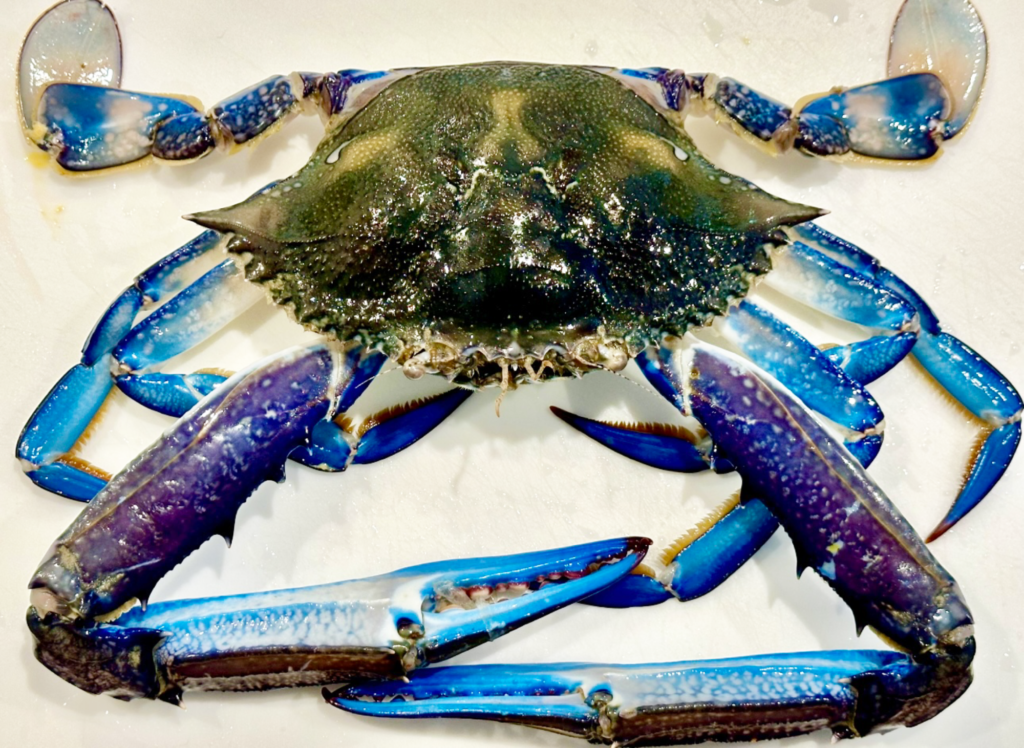
Learn how to prepare Blue Swimmer Crabs with an easy step-by-step guide, complete with helpful photos and video from a former fishmonger
Tips from an ex-fishmonger
I’ve probably mentioned this before, but I used to sell fish on the side when I was in uni. To put it simply, it was one of the worst jobs I’ve ever had. We were stuck wearing their unsightly bright blue uniform, and to add insult to injury, we had to share smelly gumboots.
Let’s not overlook the fact that I would smell like fish guts for weeks, even after showering! On top of that, the business owners were terrible to us. They made us kids work tirelessly for just a few coins. But, don’t get me started on them, it’ll just infuriate me ?
On a positive note, in every job, we gain new and useful skills. In just 2 minutes, I can name at least 50 types of fish. Ok, that’s not a very useful skill! Well, I can fillet fish, remove their skin and bones, but I’m not great at it, since males typically handle those tasks.
Since I also learned how to prepare Blue Swimmer Crabs, I thought this post would be useful for first-time crab handlers.
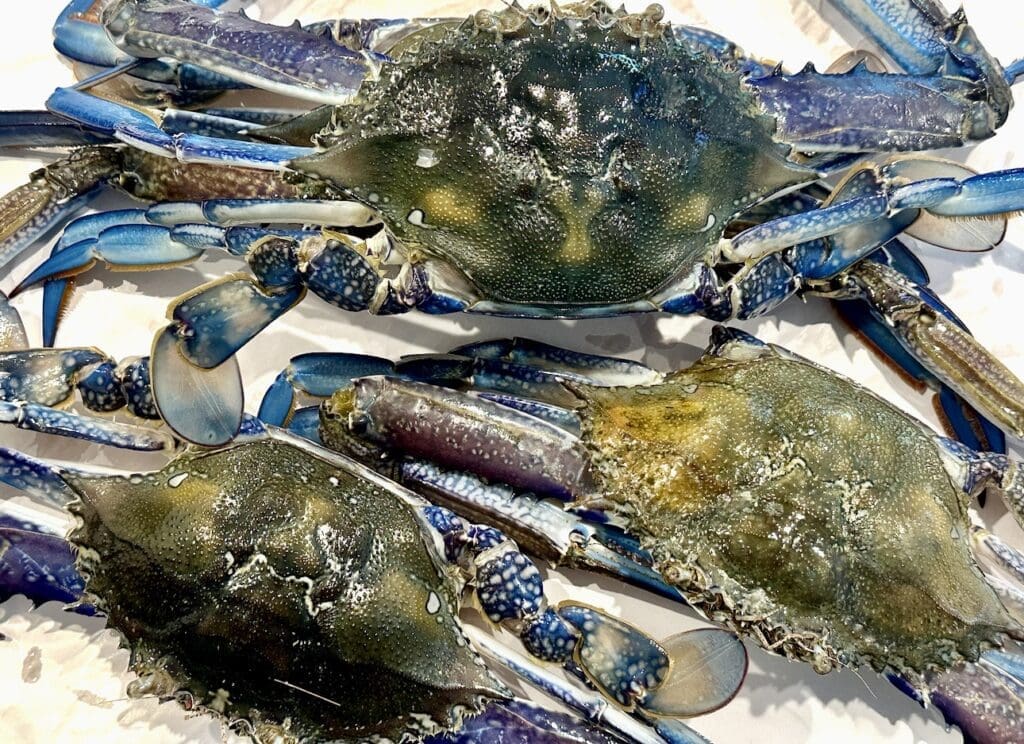
We sold mainly Blue Swimmer Crabs and on special occasions like Easter or Christmas, we would have large mud crab. Customers purchased these items as they were, so we didn’t need to clean them. The Blue Swimmers never come in alive and customers frequently request us to clean and cut them.
Cleaning and preparing a crab for cooking may seem daunting, but it’s actually straightforward once you get the hang of it. Also, it may seem gross at first seeing the guts and all, but after doing it a few times, you won’t even think about it. My cringe part is removing the eyes. Ugh, I’m still not immune to that!
Blue Swimmer Crabs
What are Blue swimmer crabs?
You can usually find them sold raw (green) and cooked (orange) at fishmongers, and they typically sell the males and females separately. Blue swimmer crabs are a species of crab found in coastal regions of the Indo-Pacific. They have distinctive blue colouration and paddle-shaped rear swimming legs. Blue swimmer crabs are in high demand because of their sweet and delicate meat. You can easily find Blue Swimmers at most fishmongers, sold raw (green) and cooked (orange), with the males and females commonly sold separately.
How to select Blue swimmer crabs?
When selecting Blue swimmer crabs, there are a few key factors to consider. Avoid crabs with shell damage and ones with dark marks near the leg joints or abdomen. The larger and heavier the crab, the more meat it typically has. Fresh crabs shouldn’t have a strong seafood or fishy smell.
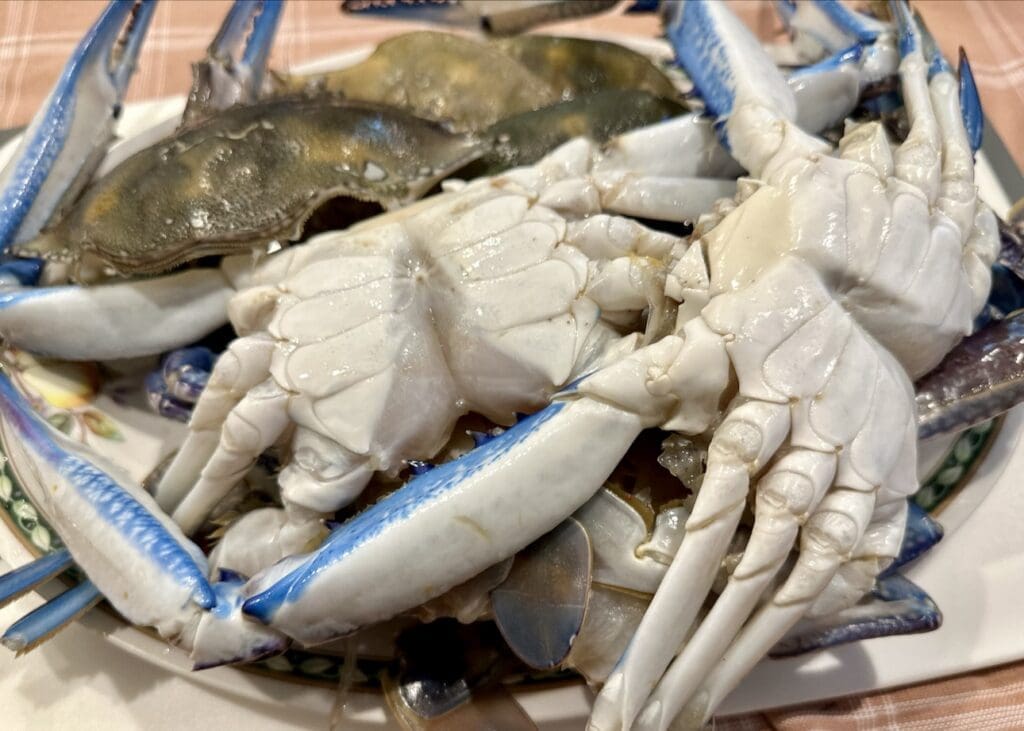
How to store Blue swimmer crabs?
For optimal flavour and safety, cook the crabs within 1 to 2 days of purchase. If the crabs are alive, place them in a well-ventilated container with a damp newspaper or a wet towel at the bottom and store in a cool place. If the crabs are no longer alive, place them in a container on top of a sealed bag of ice and store in the fridge.
Can I eat the innards from a crab?
Crab innards, such as their roe or liver, are loved by some people for their intense ‘crab’ taste. I prefer to remove most of their innards before cooking because of potential health risks from any toxins and impurities.
Attention crab and lobster lovers!
Subscribe to 3CatsFoodie’s FREE Newsletter

For the latest recipes and other fun stuff!
How to prepare Blue Swimmer Crab
Step-by-step guide with photos
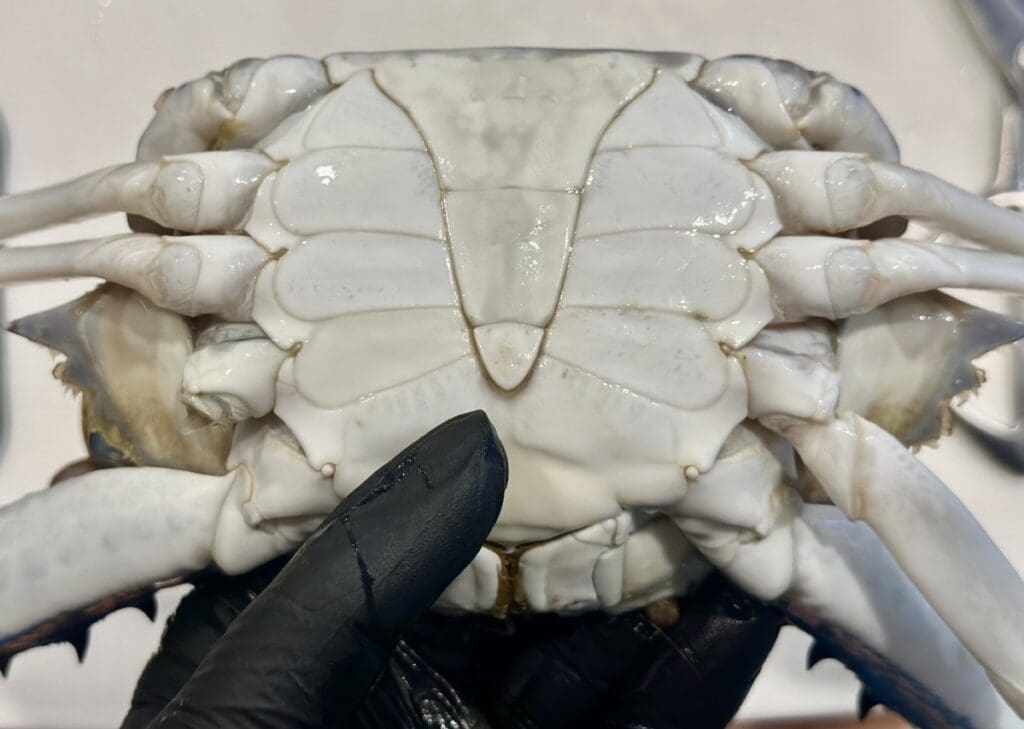
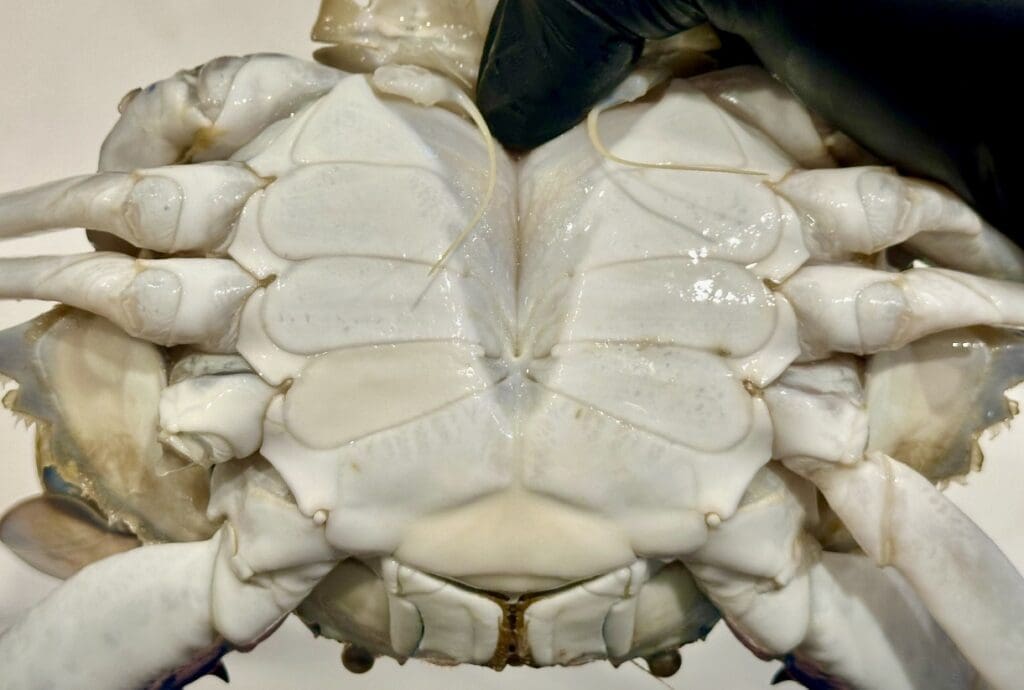
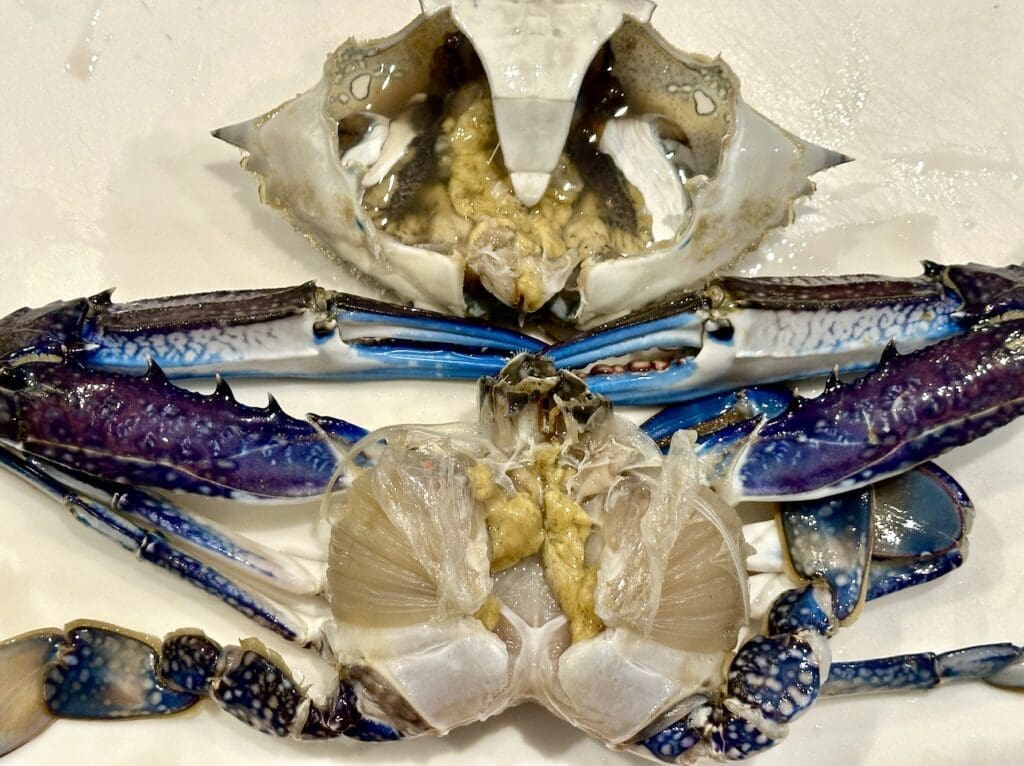
Turn the crab on its belly and you’ll see the abdomen flap. Flip it up, place a thumb in centre, and pull open the crab. Remove the top shell completely from the body of the crab.
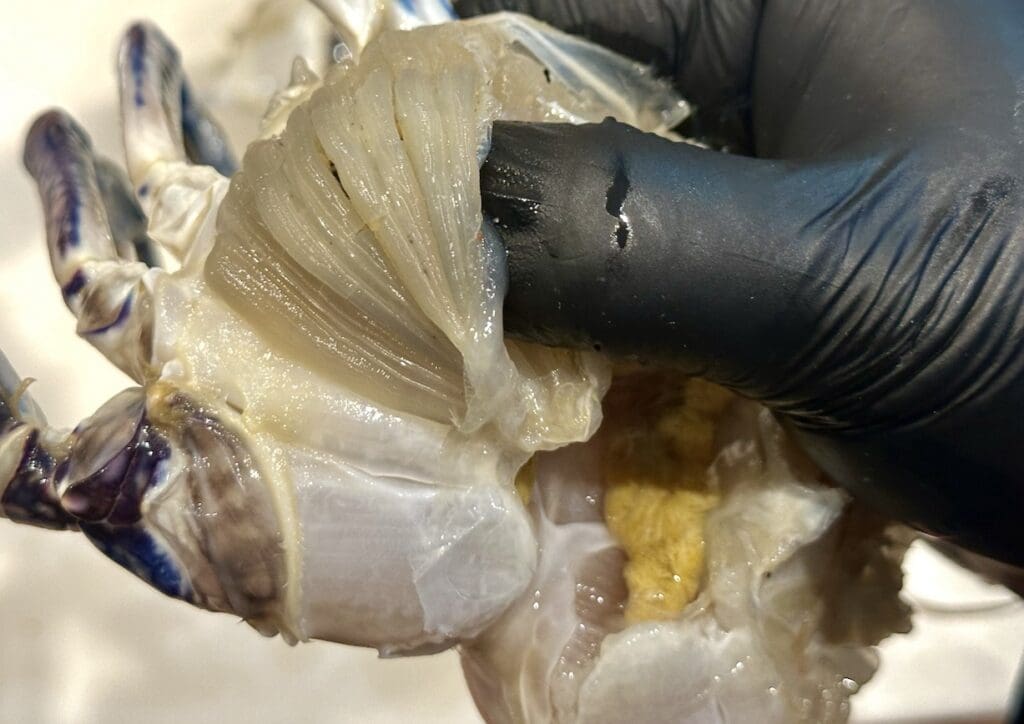
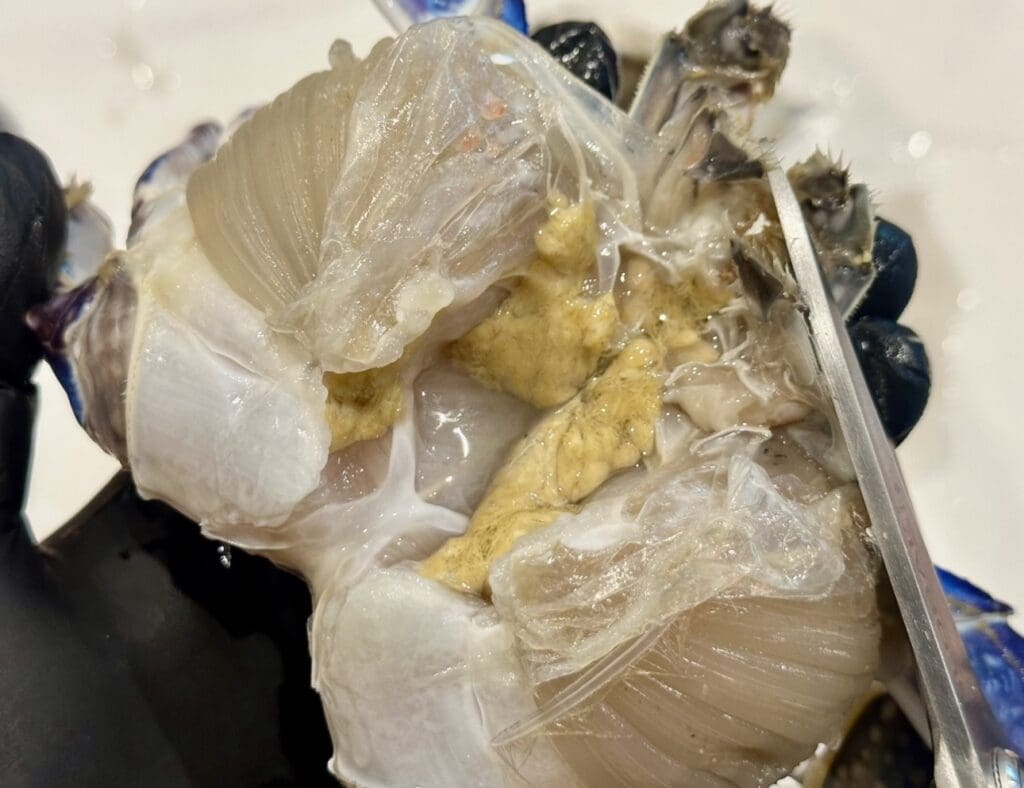
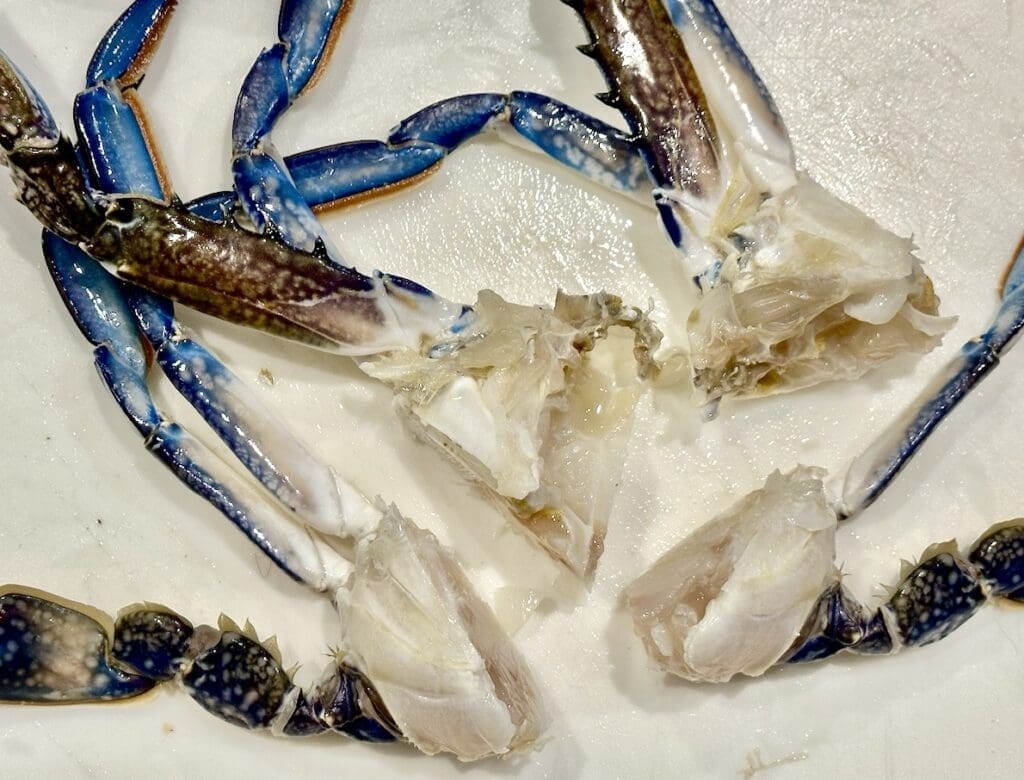
To remove the innards, either use a paper towel or rinse with a small amount of water, using your fingers to help extract the guts. Don’t submerge the crab in water because its flesh may absorb the water. Optional – rinse out the top shell and remove the eyes, then keep for presentation.
Remove the gills on the left and right of the crab, then cut off the part that looks like eyes.
Optional – Use a large sharp knife to cut the crap in the middle, divide the legs and claws evenly, then cut into quarters. To avoid the flesh from popping out, insert the knife blade in the same direction as the crab’s body when slicing through it.
Use a crab cracker to break through sections of the legs and claws. This will make it easier to access the flesh and enhance the flavour, ideal for stir-frying the crab in sauce. If you don’t have a cracker, use the back of a large sturdy knife to crack the shells.
I’ve used a third-party application to calculate the calories and nutritional information, so please use this as an approximate guide only.
I would love your feedback and support if you found these instructions useful. To do this, please rate this recipe and provide a comment by scrolling down this page or by clicking that green circle on the bottom left. An email address is required (for spam), but it won’t be published. I would also love to see your dish, so don’t forget to tag me on my Instagram account ‘3catsfoodie’
Cheers – Cat T
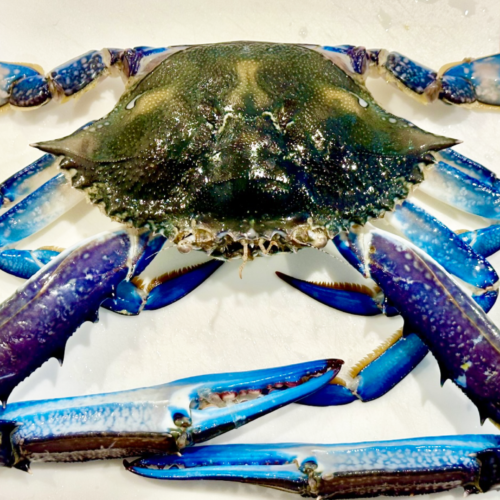
How to prepare Blue Swimmer Crabs
Video
Ingredients
- 1 large Blue swimmer crab
Instructions
- Turn the crab on its belly and you'll see the abdomen flap. It should flip up with ease, place a thumb in the centre of where the flap was and pull the crab open. Remove the top shell completely from the body of the crab.

- To remove the innards, either use a paper towel or rinse with a small amount of water, using your fingers to help extract the guts. Don't submerge the crab in water because its flesh may absorb the water. Optional – rinse out the top shell and keep for presentation.

- Remove the gills on the left and right of the crab, then cut off the part that looks like eyes.

- Optional – Use a large sharp knife to cut the crap in the middle, divide the legs and claws evenly, then cut into quarters. To avoid the flesh from popping out, insert the knife blade in the same direction as the crab's body when slicing through it.

- Use a crab cracker to break through sections of the legs and claws. This will make it easier to access the flesh and enhance the flavour, ideal for stir-frying the crab in sauce. If you don't have a cracker, use the back of a large sturdy knife to crack the shells.



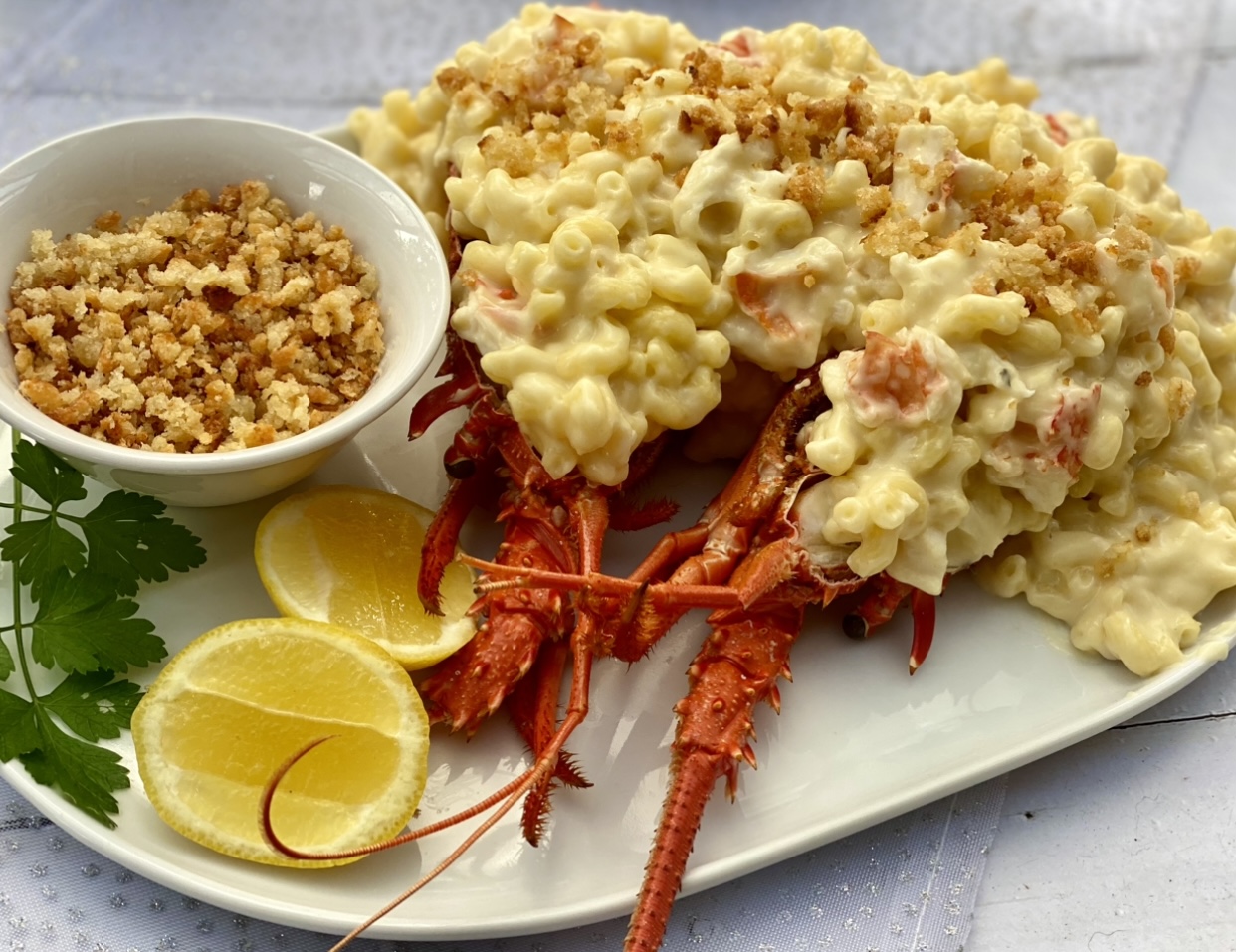
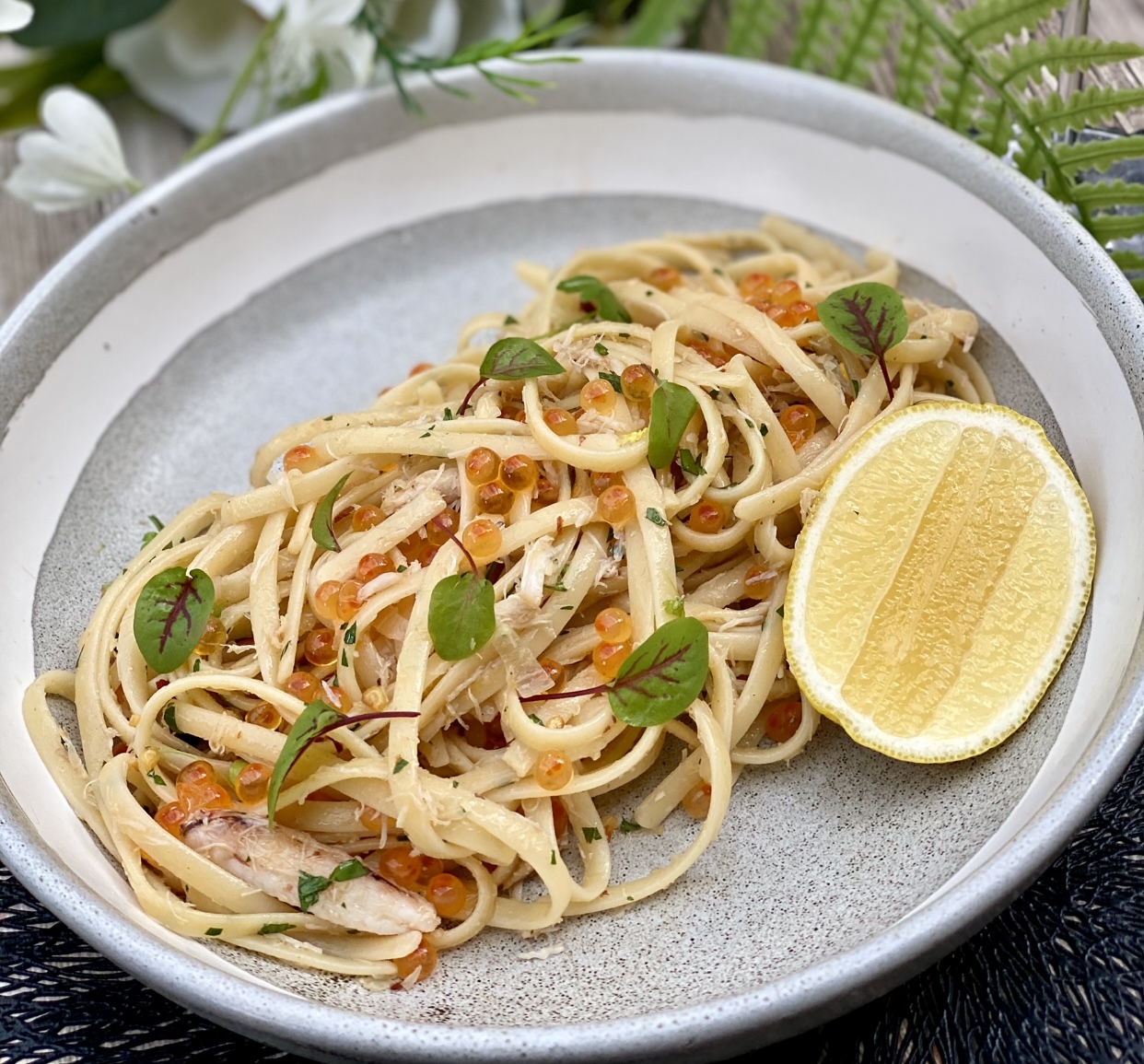
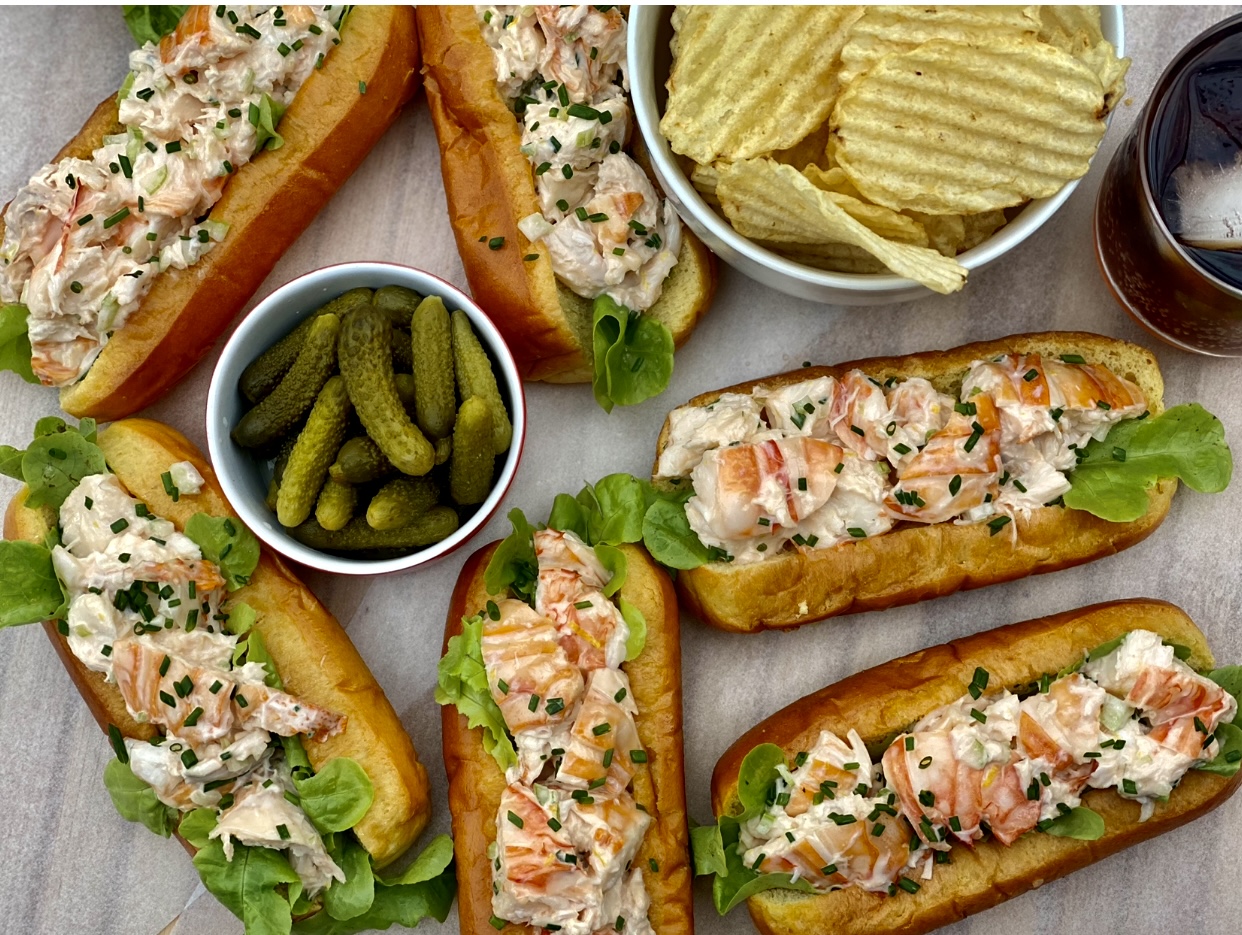
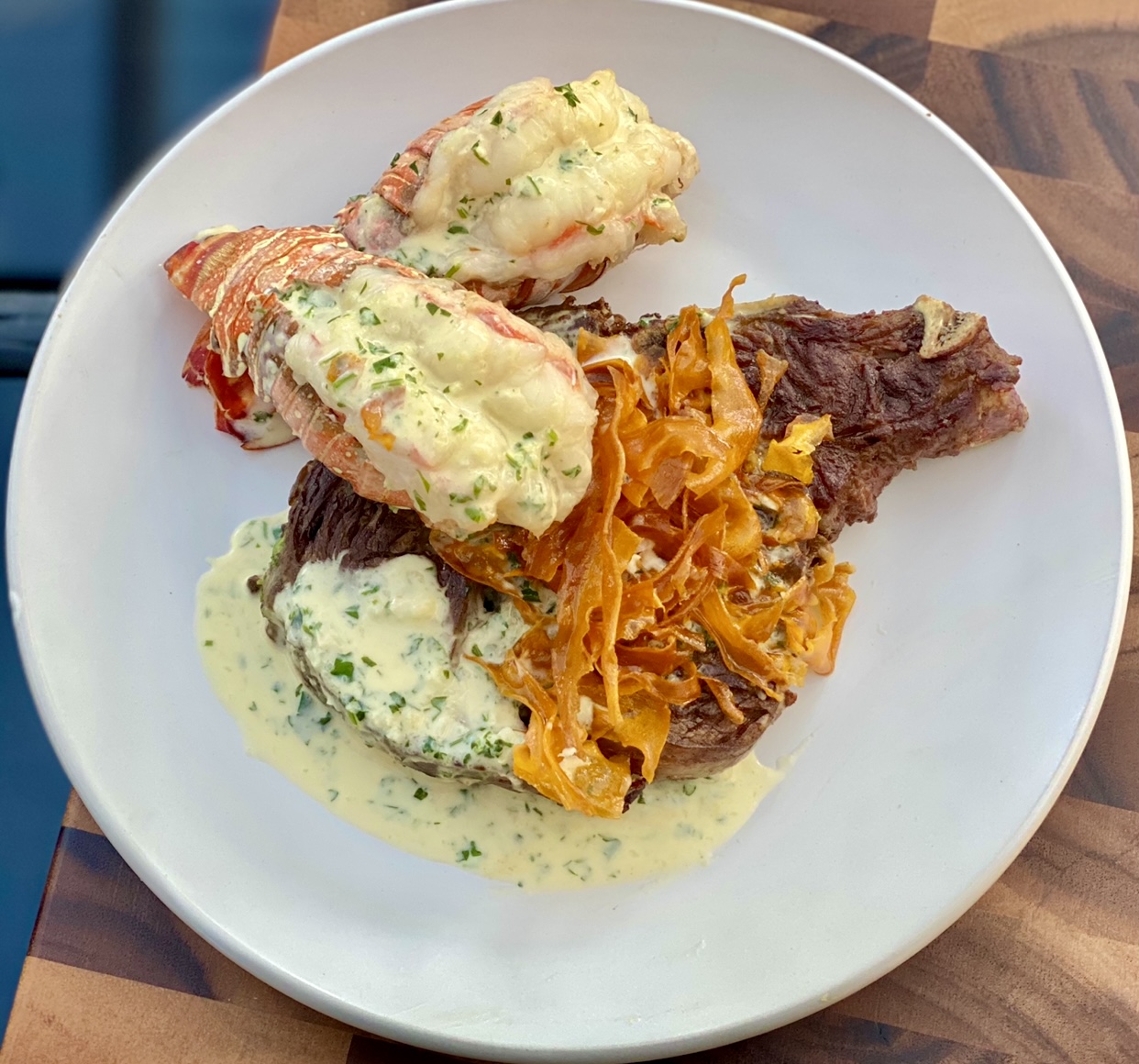

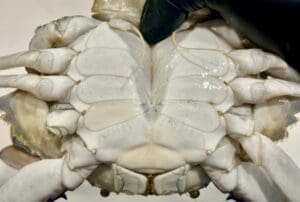
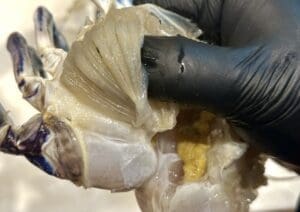
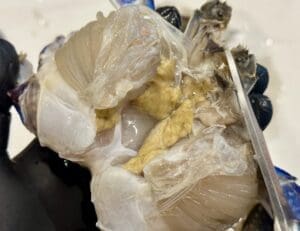
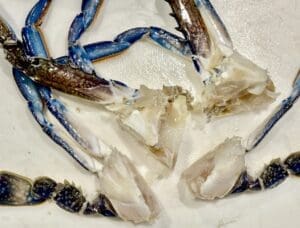



Thanks so much for this Catt! Super information and easy to follow info. Loved the video too!
You’re most welcome, Morgana 😊 So happy you found this guide useful! Thanks for visiting my blog